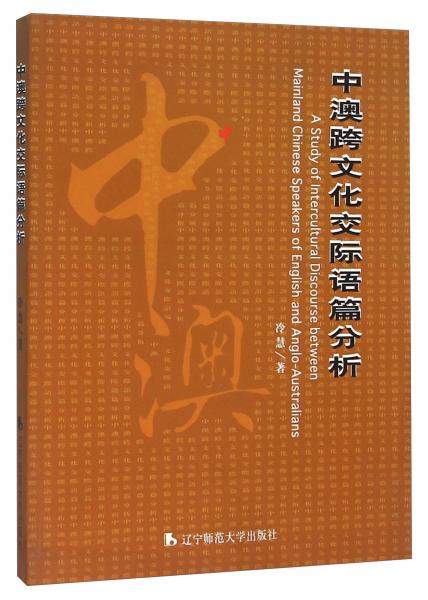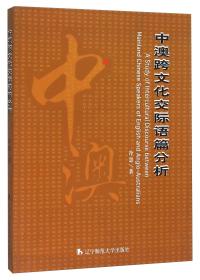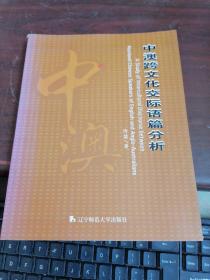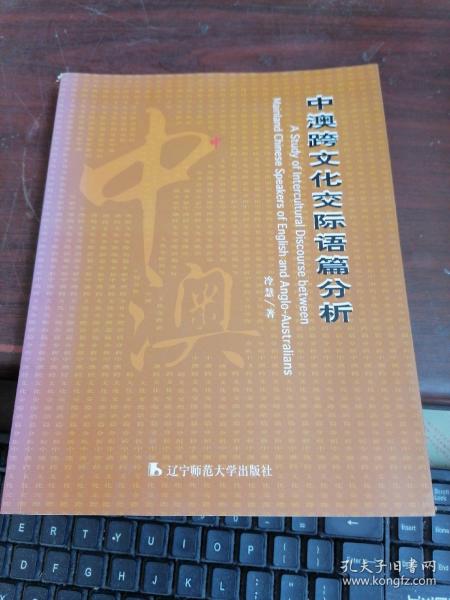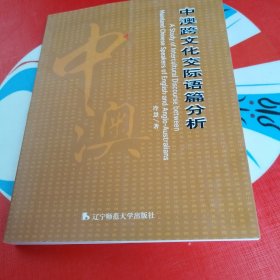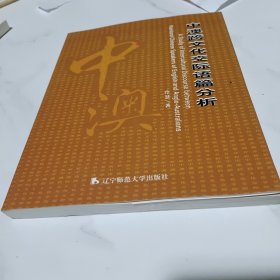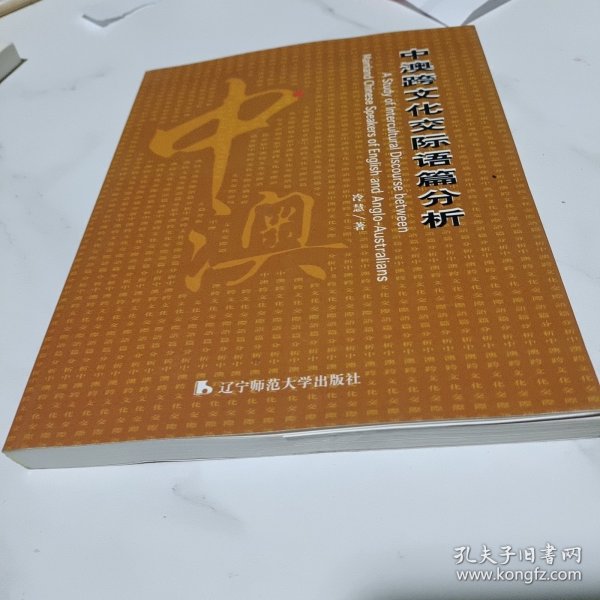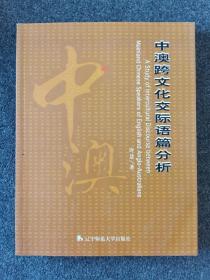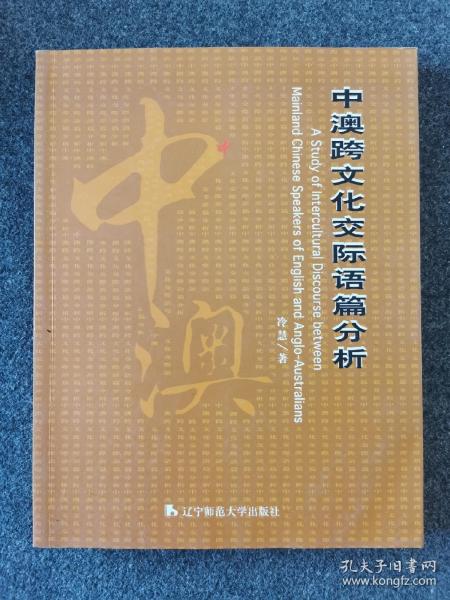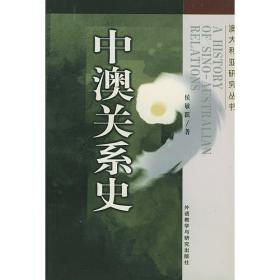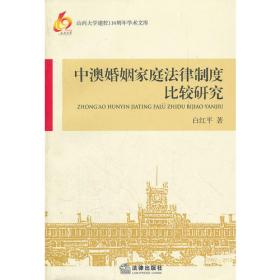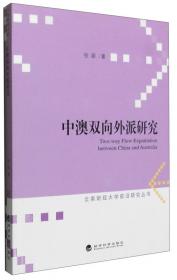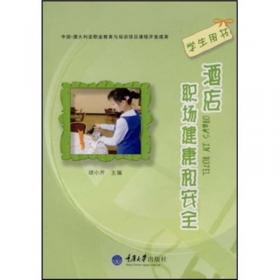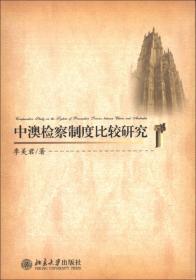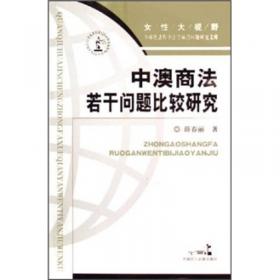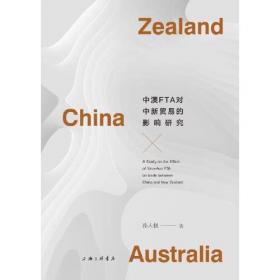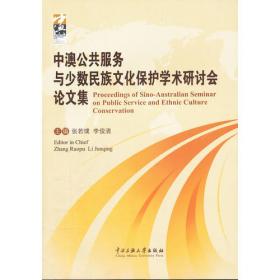中澳跨文化交际语篇分析
出版时间:
2007-12
版次:
1
ISBN:
9787811036893
定价:
48.00
装帧:
平装
开本:
16开
纸张:
胶版纸
页数:
308页
字数:
480千字
正文语种:
简体中文
2人买过
-
《中澳跨文化交际语篇分析》的启示是:(一)在跨文化交际过程中,要解决由于文化背景不同而带来的误解、偏见,交流双方需要分析、了解不同文化背景背后的不同文化图式,找出其思维的认知基础。只有彼此深入理解和赏识对方的文化图式,交流双方才能真正进行协商,达成共识,才能终进行顺畅的跨文化交际。(二)培养中国的双语人才,不仅要培养学生两种语言的使用能力或交际能力,重要的是培养其跨文化交际能力。跨文化交际能力培养的基础在于使中国学生首先了解中国语言和中国文化的认知源泉.在学习西方语言和西方文化的同时.能对两种语言和两种文化进行认知图式层面上的对比、分析。真正的双语人才不仅对语言差异有敏锐的直觉,还要对文化差异有理性的分析,并能与对方在认知图式的深度上进行沟通,从而达到消除误会、畅所欲言的交际佳境。 前言
Preface (Gary B. Palmer)
Preface (Ian Malcolm)
Preface (Stephen Keith)
CHAPTER ONE
Introduction to the Study
1.1 Background of the study
1.2 Rationale of the study: Intercultural communication between mainland Chinese speakers
of English and Anglo-Australians
1.3 Objectives and research questions of the study
1.4 Significance of the study
1.50rganisation of the chapters
CHAPTER TWO
Review of the Literature: Major Approaches Influencing Studying Chinese Ways of
Communication in Intercultural Situations
2.1 Introduction to the chapter :
2.2 Background of intercultural communication study
2.3 Interactional sociolingnistic approach to intercultural discourse analysis
2.3.1 Contextual presuppositions
2.3.2 Situated inferences
2.3.3 Contextualisation cues
2.3.4 Research method of interactional sociolingnistics
2.3.5 Applying the interactional sociolinguistic approach to the Chinese context
2.4 Cross-cultural speech-act approach
2.5 Cultural scripts: Natural semantic metalangnage
2.6 A discourse approach
2.7 Discussion: Relevance of the four approaches to the present study
CHAPTER THREE
Theoretical Framework for the Study
3.1 Introduction to the chapter
3.2 Theories of schemas and cultural schemas
3.2.1 Genesis of schema theories
3.2.2 Schemas in cognitive psychology and computer science
3.2.3 Schemas in cognitive anthropology
3.2.4 Schemas in cognitive linguistics
3.2.5 Schemas in cultural linguistics
3.3 Imagery
3.4 World view
3.5 Discourse scenarios in cultural linguistics
3.5.1 Comparing discourse scenarios and other related concepts
3.5.2 The application of discourse scenarios
3.6 Discourse indexicals in cultural linguistics
3.7 Proposition-schemas
3.8 Summary
CHAPTER FOUR
Research Design and Methodology
4.1 Introduction to the chapter
4.2 Research traditions of ethnography of communication, sociolinguistics and
finguistic anthropology
4.3 Research traditions of EOC and the present study
4.4 Identifying cultural schemas in cognitive anthropology
4.4.1 Identifying an American folk model of mind
4.4.2 Identifying American problem-solving models
4.4.3 Identifying American explanatory systems
4.4.4 Identifying American models of marriage
4.4.5 Identifying Ecuadorian cultural models of illness
4.5 Identifying cultural schemas in cultural linguistics
4.5.1 Identifying Australian Aboriginal cultural schemas through
systematic etic-emic investigations
4.5.2 Identifying Australian Aboriginal cultural schemas through
word association-interpretation
4.5.3 Identifying agency schemas in Tagalog
4.6 Methods and procedures for identifying and analysing Chinese cultural schemas
4.7 Pilot studies
4.8 Selection of participants
4.9 Data collection
4.10 Coding system
4.11 Summary
CHAPTER FIVE
Data Analysis (1): Chinese Cultural Schema of Harmony
5.1 Introduction to the chapter
5.2 Emergence of the Chinese cultural schema of Harmony
5.2.1 Chinese world view of tianren heyi 'Unity of Heaven and Mankind' and he ' harmony'
5.2.2 Yin-yang balance and he 'harmony'
5.2.3 Daoism and he 'harmony'
5.2.4 Confucianism and he 'harmony'
5.2.5 Chinese Buddhism Chart Sect (禅宗'Zen' and he 'harmony')
5.3 Instantiations of the Harmony schema in the Chinese language
5.4 Data analysis
5.5 Summary and discussion
CHAPTER SIX
Data Analysis (2): Chinese Cultural Schema of Family
6.1 Introduction to the chapter
6.2 Emergence of the Chinese cultural schema of Family
6.2.1 Chinese agriculture and the Family schema
6.2.2 The Chinese tradition of joint families and the Family schema
6.2.3 Confucianism and the Family schema
6.3 Instantiations of the Family schema in Chinese language
6.3.1 Folk art, literature and Family schema instantiations
6.3.2 Chinese phrases, idioms, common sayings and Family schema instantiations
6.3.3 Terms of address and Family schema instantiations
6.3.4 Greeting expressions and Family schema instantiations
6.3.5 Chinese discourse and Family schema instantiations
6.4 Data analysis
6.5 Summary and discussion
CHAPTER SEVEN
Data Analysis (3): Chinese Cultural Schema of Education
7.1 Introduction to the chapter
7.2 Emergence of the Chinese cultural schema of Education
7.2.1 Traditional Chinese education and the Education schema
7.2.2 Teacher roles, status and the Education schema
7.2.3 Examinations and the Education schema
7.3 Instantiations of the Education schema in Chinese language
7.4 Data analysis
7.5 Summary and discussion
CHAPTER EIGHT
Concluding Discussion, Limitations and Implications
8.1 Introduction to the chapter
8.2 A fundamental feature of Chinese discourse scenarios
8.3 Relationships between the three identified Chinese cultural schemas
8.4 Limitations
8.5 Implications for intercultural communication between mainland Chinese speakers of English and Anglo-Australians
8.6 Implications for English teaching as a foreign language in mainland China and as a
second language in Australia
8.7 Suggestions for further research
8.8 Conclusion
References
Appendix Ⅰ: Glossary of Chinese Discourse Scenarios
Appendix Ⅱ: A List of Excerpts and Discourse Scenarios
Acknowledgements
-
内容简介:
《中澳跨文化交际语篇分析》的启示是:(一)在跨文化交际过程中,要解决由于文化背景不同而带来的误解、偏见,交流双方需要分析、了解不同文化背景背后的不同文化图式,找出其思维的认知基础。只有彼此深入理解和赏识对方的文化图式,交流双方才能真正进行协商,达成共识,才能终进行顺畅的跨文化交际。(二)培养中国的双语人才,不仅要培养学生两种语言的使用能力或交际能力,重要的是培养其跨文化交际能力。跨文化交际能力培养的基础在于使中国学生首先了解中国语言和中国文化的认知源泉.在学习西方语言和西方文化的同时.能对两种语言和两种文化进行认知图式层面上的对比、分析。真正的双语人才不仅对语言差异有敏锐的直觉,还要对文化差异有理性的分析,并能与对方在认知图式的深度上进行沟通,从而达到消除误会、畅所欲言的交际佳境。
-
目录:
前言
Preface (Gary B. Palmer)
Preface (Ian Malcolm)
Preface (Stephen Keith)
CHAPTER ONE
Introduction to the Study
1.1 Background of the study
1.2 Rationale of the study: Intercultural communication between mainland Chinese speakers
of English and Anglo-Australians
1.3 Objectives and research questions of the study
1.4 Significance of the study
1.50rganisation of the chapters
CHAPTER TWO
Review of the Literature: Major Approaches Influencing Studying Chinese Ways of
Communication in Intercultural Situations
2.1 Introduction to the chapter :
2.2 Background of intercultural communication study
2.3 Interactional sociolingnistic approach to intercultural discourse analysis
2.3.1 Contextual presuppositions
2.3.2 Situated inferences
2.3.3 Contextualisation cues
2.3.4 Research method of interactional sociolingnistics
2.3.5 Applying the interactional sociolinguistic approach to the Chinese context
2.4 Cross-cultural speech-act approach
2.5 Cultural scripts: Natural semantic metalangnage
2.6 A discourse approach
2.7 Discussion: Relevance of the four approaches to the present study
CHAPTER THREE
Theoretical Framework for the Study
3.1 Introduction to the chapter
3.2 Theories of schemas and cultural schemas
3.2.1 Genesis of schema theories
3.2.2 Schemas in cognitive psychology and computer science
3.2.3 Schemas in cognitive anthropology
3.2.4 Schemas in cognitive linguistics
3.2.5 Schemas in cultural linguistics
3.3 Imagery
3.4 World view
3.5 Discourse scenarios in cultural linguistics
3.5.1 Comparing discourse scenarios and other related concepts
3.5.2 The application of discourse scenarios
3.6 Discourse indexicals in cultural linguistics
3.7 Proposition-schemas
3.8 Summary
CHAPTER FOUR
Research Design and Methodology
4.1 Introduction to the chapter
4.2 Research traditions of ethnography of communication, sociolinguistics and
finguistic anthropology
4.3 Research traditions of EOC and the present study
4.4 Identifying cultural schemas in cognitive anthropology
4.4.1 Identifying an American folk model of mind
4.4.2 Identifying American problem-solving models
4.4.3 Identifying American explanatory systems
4.4.4 Identifying American models of marriage
4.4.5 Identifying Ecuadorian cultural models of illness
4.5 Identifying cultural schemas in cultural linguistics
4.5.1 Identifying Australian Aboriginal cultural schemas through
systematic etic-emic investigations
4.5.2 Identifying Australian Aboriginal cultural schemas through
word association-interpretation
4.5.3 Identifying agency schemas in Tagalog
4.6 Methods and procedures for identifying and analysing Chinese cultural schemas
4.7 Pilot studies
4.8 Selection of participants
4.9 Data collection
4.10 Coding system
4.11 Summary
CHAPTER FIVE
Data Analysis (1): Chinese Cultural Schema of Harmony
5.1 Introduction to the chapter
5.2 Emergence of the Chinese cultural schema of Harmony
5.2.1 Chinese world view of tianren heyi 'Unity of Heaven and Mankind' and he ' harmony'
5.2.2 Yin-yang balance and he 'harmony'
5.2.3 Daoism and he 'harmony'
5.2.4 Confucianism and he 'harmony'
5.2.5 Chinese Buddhism Chart Sect (禅宗'Zen' and he 'harmony')
5.3 Instantiations of the Harmony schema in the Chinese language
5.4 Data analysis
5.5 Summary and discussion
CHAPTER SIX
Data Analysis (2): Chinese Cultural Schema of Family
6.1 Introduction to the chapter
6.2 Emergence of the Chinese cultural schema of Family
6.2.1 Chinese agriculture and the Family schema
6.2.2 The Chinese tradition of joint families and the Family schema
6.2.3 Confucianism and the Family schema
6.3 Instantiations of the Family schema in Chinese language
6.3.1 Folk art, literature and Family schema instantiations
6.3.2 Chinese phrases, idioms, common sayings and Family schema instantiations
6.3.3 Terms of address and Family schema instantiations
6.3.4 Greeting expressions and Family schema instantiations
6.3.5 Chinese discourse and Family schema instantiations
6.4 Data analysis
6.5 Summary and discussion
CHAPTER SEVEN
Data Analysis (3): Chinese Cultural Schema of Education
7.1 Introduction to the chapter
7.2 Emergence of the Chinese cultural schema of Education
7.2.1 Traditional Chinese education and the Education schema
7.2.2 Teacher roles, status and the Education schema
7.2.3 Examinations and the Education schema
7.3 Instantiations of the Education schema in Chinese language
7.4 Data analysis
7.5 Summary and discussion
CHAPTER EIGHT
Concluding Discussion, Limitations and Implications
8.1 Introduction to the chapter
8.2 A fundamental feature of Chinese discourse scenarios
8.3 Relationships between the three identified Chinese cultural schemas
8.4 Limitations
8.5 Implications for intercultural communication between mainland Chinese speakers of English and Anglo-Australians
8.6 Implications for English teaching as a foreign language in mainland China and as a
second language in Australia
8.7 Suggestions for further research
8.8 Conclusion
References
Appendix Ⅰ: Glossary of Chinese Discourse Scenarios
Appendix Ⅱ: A List of Excerpts and Discourse Scenarios
Acknowledgements
查看详情
-
九品
北京市海淀区
平均发货24小时
成功完成率87.6%
-
八五品
辽宁省大连市
平均发货16小时
成功完成率94.78%
-
九五品
-
九五品
辽宁省大连市
平均发货11小时
成功完成率91.6%
-
九品
辽宁省大连市
平均发货11小时
成功完成率91.6%
-
全新
-
全新
北京市海淀区
平均发货29小时
成功完成率100%

 占位居中
占位居中

